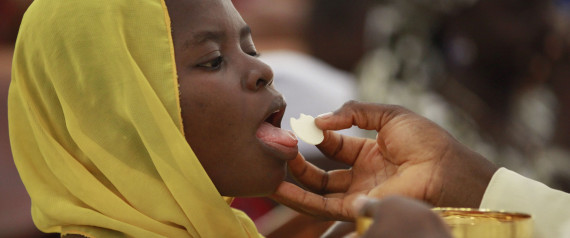Something there is that needs a crucifixion. Everything that’s good eventually gets scapegoated and crucified. How? By that curious, perverse dictate somehow innate within human life that assures that there’s always someone or something that cannot leave well enough alone, but, for reasons of its own, must hunt down and lash out at what’s good.
What’s good, what’s of God, will always at some point be misunderstood, envied, hated, pursued, falsely accused, and eventually nailed to some cross. Every body of Christ inevitably suffers the same fate as Jesus: death through misunderstanding, ignorance, and jealousy.
But there’s a flipside as well: Resurrection always eventually trumps crucifixion. What’s good eventually triumphs. Thus, while nothing that’s of God will avoid crucifixion, no body of Christ stays in the tomb for long.
God always rolls back the stone and, soon enough, new life bursts forth and we see why that original life had to be crucified. (“Wasn’t it necessary that the Christ should so have to suffer and die?”) Resurrection invariably follows crucifixion. Every crucified body will rise again. Our hope takes its root in that.
But how does this happen? Where do we see the resurrection? How do we experience resurrection after a crucifixion? Scripture is subtle, though clear, on this. Where can we expect to experience resurrection? The gospel tell us that, on the morning of the resurrection, the women-followers of Jesus set out for the tomb of Jesus, carrying spices, expecting to anoint and embalm a dead body.
Well-intentioned but misguided, what they find is not a dead body, but an empty tomb and an angel challenging them with these words: “Why are you looking for the living among the dead? Go instead into Galilee and you will find him there!”
Go instead into Galilee. Why Galilee? What’s Galilee? And how do we get there?
In the gospels, Galilee is not simply a geographical location, a place on a map. It is first of all a place in the heart. As well, Galilee refers to the dream and to the road of discipleship that the disciples once walked with Jesus and to that place and time when their hearts most burned with hope and enthusiasm.
And now, after the crucifixion, just when they feel that the dream is dead, that their faith is only fantasy, they are told to go back to the place where it all began: “Go back to Galilee. He will meet you there!”
And they do go back to Galilee, both to the geographical location and to that special place in their hearts where once burned the dream of discipleship. And just as promised, Jesus appears to them. He doesn’t appear exactly as he was before, or as frequently as they would like him to, but he does appear as more than a ghost and a memory.
The Christ that appears to them after the resurrection is in a different modality, but he’s physical enough to eat fish in their presence, real enough to be touched as a human being, and powerful enough to change their lives forever.
Ultimately that’s what the resurrection asks us to do: To go back to Galilee, to return to the dream, hope, and discipleship that had once inflamed us but has now been lost through disillusionment.
This parallels what happens on the road to Emmaus in Luke’s gospel, where we are told that on the day of the resurrection, two disciples were walking away from Jerusalem towards Emmaus, with their faces downcast.
An entire spirituality could be unpackaged from that simple line: For Luke, Jerusalem means the dream, the hope, and the religious centre from which all is to begin and where ultimately, all is to culminate. And the disciples are “walking away” from this place, away from their d
Since their dream has been crucified, the disciples are understandably discouraged and are walking away from it, towards some human solace, despairing in their hope: “But we had hoped!”
They never get to Emmaus. Jesus appears to them on the road, reshapes their hope in the light of their disillusionment, and turns them back towards Jerusalem.
That is one of the essential messages of Easter: Whenever we are discouraged in our faith, whenever our hopes seem to be crucified, we need to go back to Galilee and Jerusalem, that is, back to the dream and the road of discipleship that we had embarked upon before things went wrong. The temptation of course, whenever the kingdom doesn’t seem to work, is to abandon discipleship for human consolation, to head off instead for Emmaus, for the consolation of Las Vegas or Monte Carlo.But, as we know, we never quite get to Las Vegas or Monte Carlo. In one guise or another, Christ always meets us on the road to those places, burns holes in our hearts, explains our latest crucifixion to us, and sends us back – and to our abandoned discipleship. Once there, it all makes sense again.



No comments:
Post a Comment